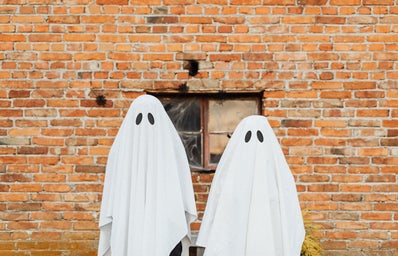I’ll admit, Halloween is one of my favorite holidays — it has been since I was in elementary school. There’s just something special about being able to become whoever you want for a day. Although it can be a fun time, it is important to recognize that consumer culture, and holidays of all kinds, produce negative externalities for the environment. In fact, Americans spend around $9 billion per year to celebrate with single-wrapped candy, costumes, and decorations. That adds up to a lot of waste. In addition, Halloween is still a space for individuals to be blatantly racist and sexist; we need to be vigilant both to not contribute to the issue and to actively educate others about their harmful behavior. Here are some ways to make sure your costume isn’t problematic this Halloween:
1. Shop small or local businesses
As with everything, if you have the privilege to shop small and local businesses you definitely should. I personally love supporting makers on Etsy rather than purchasing from Amazon and like to find things on Craigslist when I can. Remember, you vote with your dollar, whether you choose to be aware of it or not. Also, buy from Black-owned businesses because #BlackLivesMatter!
2. Buy high quality
If you have the money to buy a costume, make sure it is of high quality. Shopping for a costume that is made of synthetic, easily ripped fabrics is not only bad for its longevity but for your ethical responsibilities toward people and the planet. Most costumes you’ll find at big-box stores or on Amazon are produced using labor in other countries — which could spell child labor, underpaid workers, or poor factory conditions. In addition, oil-based plastics like polyester are found in the majority of Halloween costumes and are a major contributor to microplastic pollution, even from just washing them in the laundry machine. These plastics persist in the environment for decades — they don’t biodegrade! Throwaway costumes and fast fashion are no joke.
3. Choose versatile pieces
A black dress is a good place to start if you want a capsule wardrobe for Halloween purposes. Magic wands, witch hats, fuzzy animal ears, horns, and capes also work for a variety of characters. Find pieces that can be reworn each year and altered in small ways.
4. Make your own
Before you shop for a costume, see if you already have what you need in your closet. Sewing your own costume is easier than ever with plenty of YouTube tutorials, and in all likeliness, less expensive than buying one of the same quality online.
5. Utilize makeup and hairstyling
Once you have a few versatile pieces in your closet, it’s relatively easy to use hair and makeup to transform into any character. Because you already have basic outfits to work from, you can spend less time shopping for new costumes and more time focusing on the details of your look. Check out this article for a list of all-natural makeup and body paint products. Wigs, prosthetics, fake blood and contact lenses can also be styled to achieve a number of different spooky aesthetics.
6. Do not appropriate your costume
Cultural appropriation happens every Halloween! Don’t be that person! If you were planning to dress up as an individual of another race, an Indigenous person, or buy and wear any culturally significant traditional items as part of your look… don’t! These costumes simplify very rich and diverse cultures into one monolith and often sexualize or exoticize groups of people. Cultural appropriation is also directly tied to white supremacy and colonialism (hello, blackface). You really don’t want to be that person this year or any year, so do your research. Read more about cultural appropriation in Halloween costumes here.
7. Be mindful when you thrift
Thrift shopping is wonderful and can be a place to find really unique pieces and lightly worn costumes, but be considerate of other people who might need to shop at thrift stores as their only option. Avoid buying items like coats or winter boots as these can be very limited in stock during the colder months. In addition, do not buy plus-size unless you are plus-size! There is no shortage of clothing for other size ranges. Buy things in your size rather than using plus-size clothing as material for projects. If you need fabric, shop for it intentionally secondhand or purchase it from a local business.
8. Have end-of-life considerations
When you are done wearing and re-wearing your costume pieces, where will they end up? Not the landfill or ocean, hopefully. Aim to donate or pass on your costume to a friend, family member, or stranger so that it can have a new life! If the costume is damaged, see if it can be repaired or turned into something else.
You can always be a little more green, even without dressing up as the Wicked Witch of the West this spooky season. When we recognize that environmental degradation and systemic oppression go hand in hand, it becomes much more clear why we need to be conscientious about our decision-making in every aspect of our lives. Listen to BIPOC voices and those with authority on living zero-waste; take their cues. And to emphasize just one more time: Do. Not. Wear. Traditional. Clothing. Items. If. They. Are. Not. Your. Culture.
Have a ghoulish Halloween, collegiettes!



